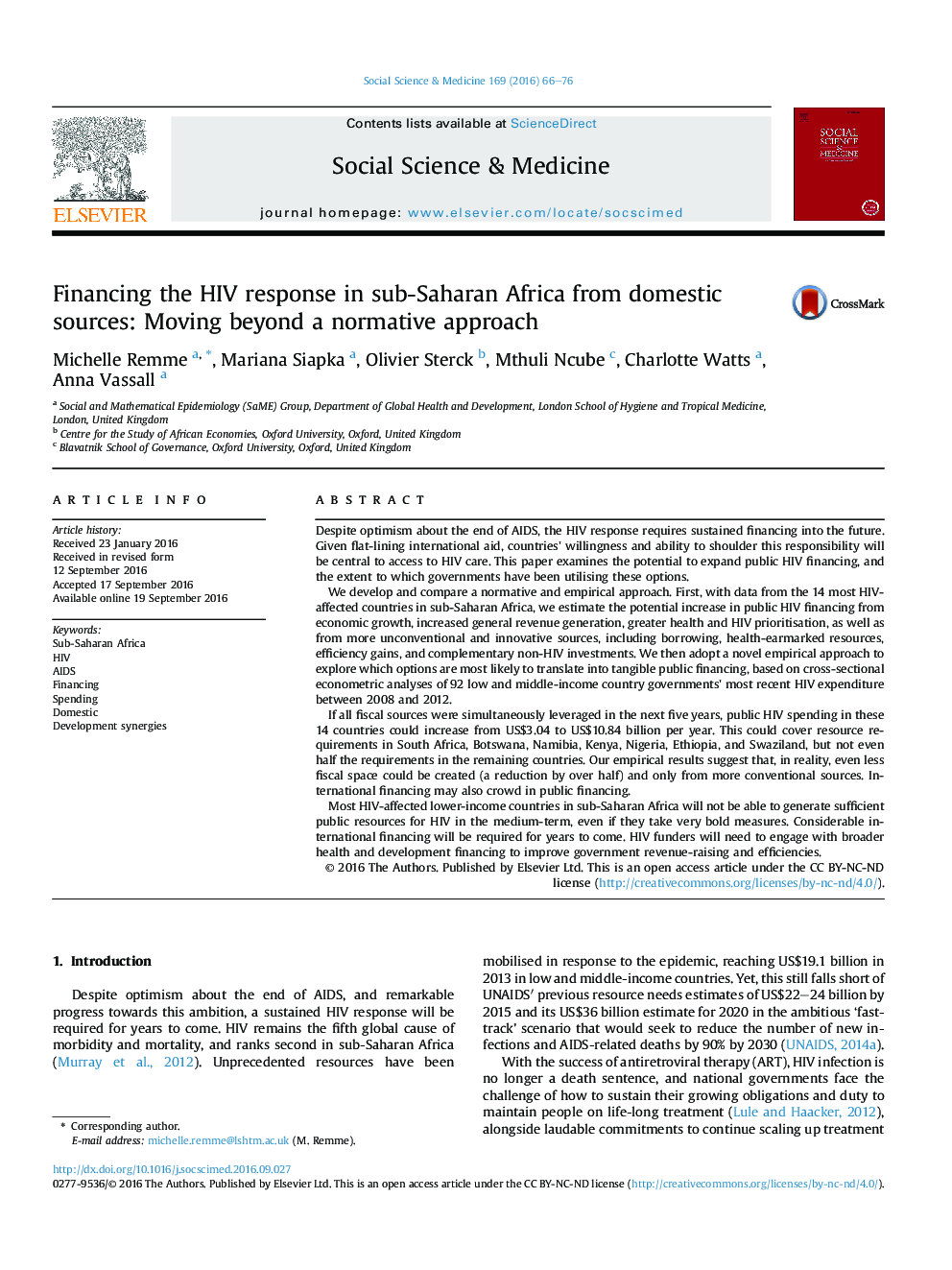| کد مقاله | کد نشریه | سال انتشار | مقاله انگلیسی | نسخه تمام متن |
|---|---|---|---|---|
| 5046891 | 1476000 | 2016 | 11 صفحه PDF | دانلود رایگان |

- Annual public HIV spending in HIV-affected African countries could increase from $3 to 11 billion.
- Countries have not been tapping all their fiscal options.
- Even with very bold measures, most will not have sufficient public resources in the medium run.
- International financing will continue to be required and may encourage domestic financing.
- HIV funders should engage with broader health and development financing agendas.
Despite optimism about the end of AIDS, the HIV response requires sustained financing into the future. Given flat-lining international aid, countries' willingness and ability to shoulder this responsibility will be central to access to HIV care. This paper examines the potential to expand public HIV financing, and the extent to which governments have been utilising these options.We develop and compare a normative and empirical approach. First, with data from the 14 most HIV-affected countries in sub-Saharan Africa, we estimate the potential increase in public HIV financing from economic growth, increased general revenue generation, greater health and HIV prioritisation, as well as from more unconventional and innovative sources, including borrowing, health-earmarked resources, efficiency gains, and complementary non-HIV investments. We then adopt a novel empirical approach to explore which options are most likely to translate into tangible public financing, based on cross-sectional econometric analyses of 92 low and middle-income country governments' most recent HIV expenditure between 2008 and 2012.If all fiscal sources were simultaneously leveraged in the next five years, public HIV spending in these 14 countries could increase from US$3.04 to US$10.84 billion per year. This could cover resource requirements in South Africa, Botswana, Namibia, Kenya, Nigeria, Ethiopia, and Swaziland, but not even half the requirements in the remaining countries. Our empirical results suggest that, in reality, even less fiscal space could be created (a reduction by over half) and only from more conventional sources. International financing may also crowd in public financing.Most HIV-affected lower-income countries in sub-Saharan Africa will not be able to generate sufficient public resources for HIV in the medium-term, even if they take very bold measures. Considerable international financing will be required for years to come. HIV funders will need to engage with broader health and development financing to improve government revenue-raising and efficiencies.
Journal: Social Science & Medicine - Volume 169, November 2016, Pages 66-76